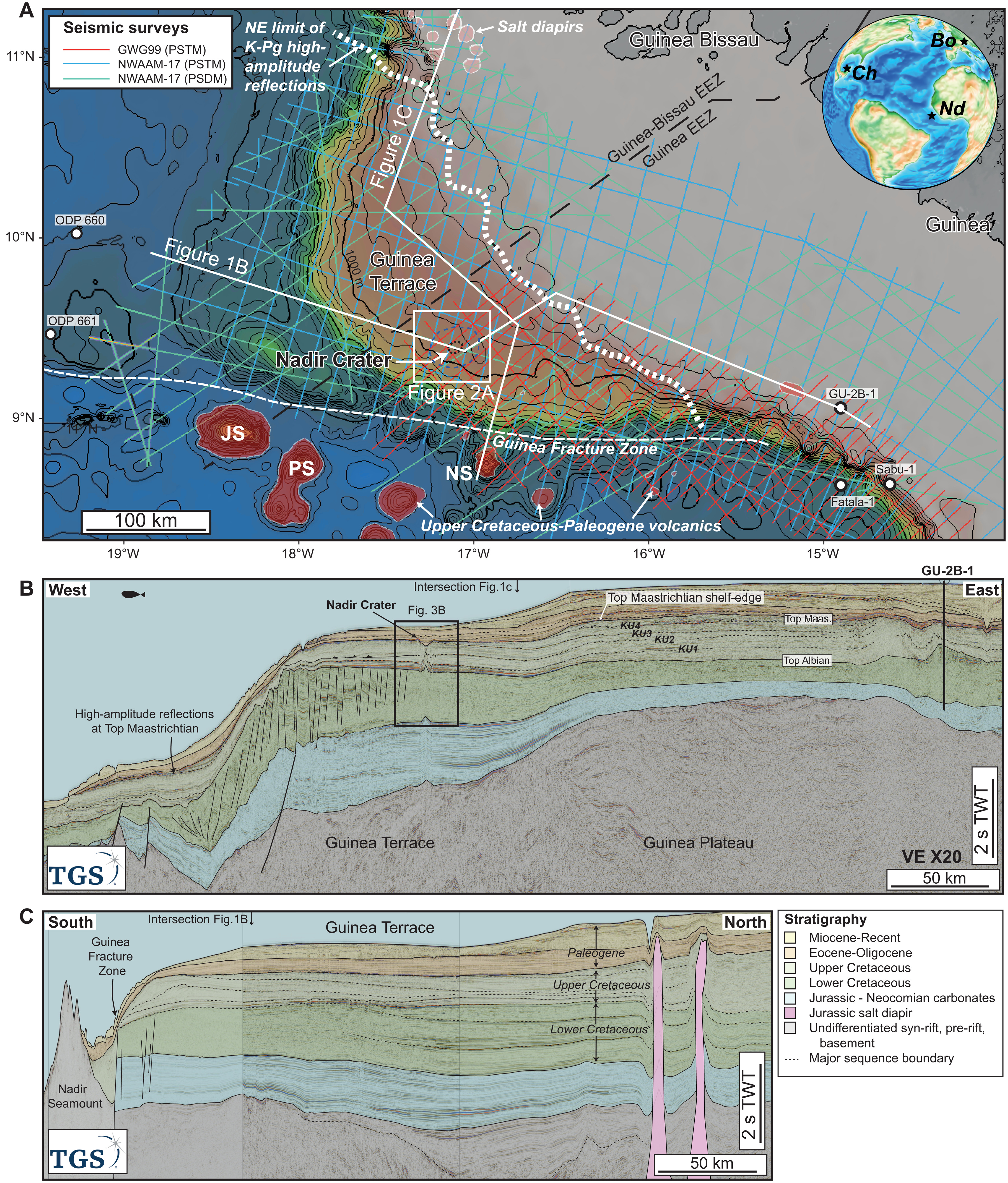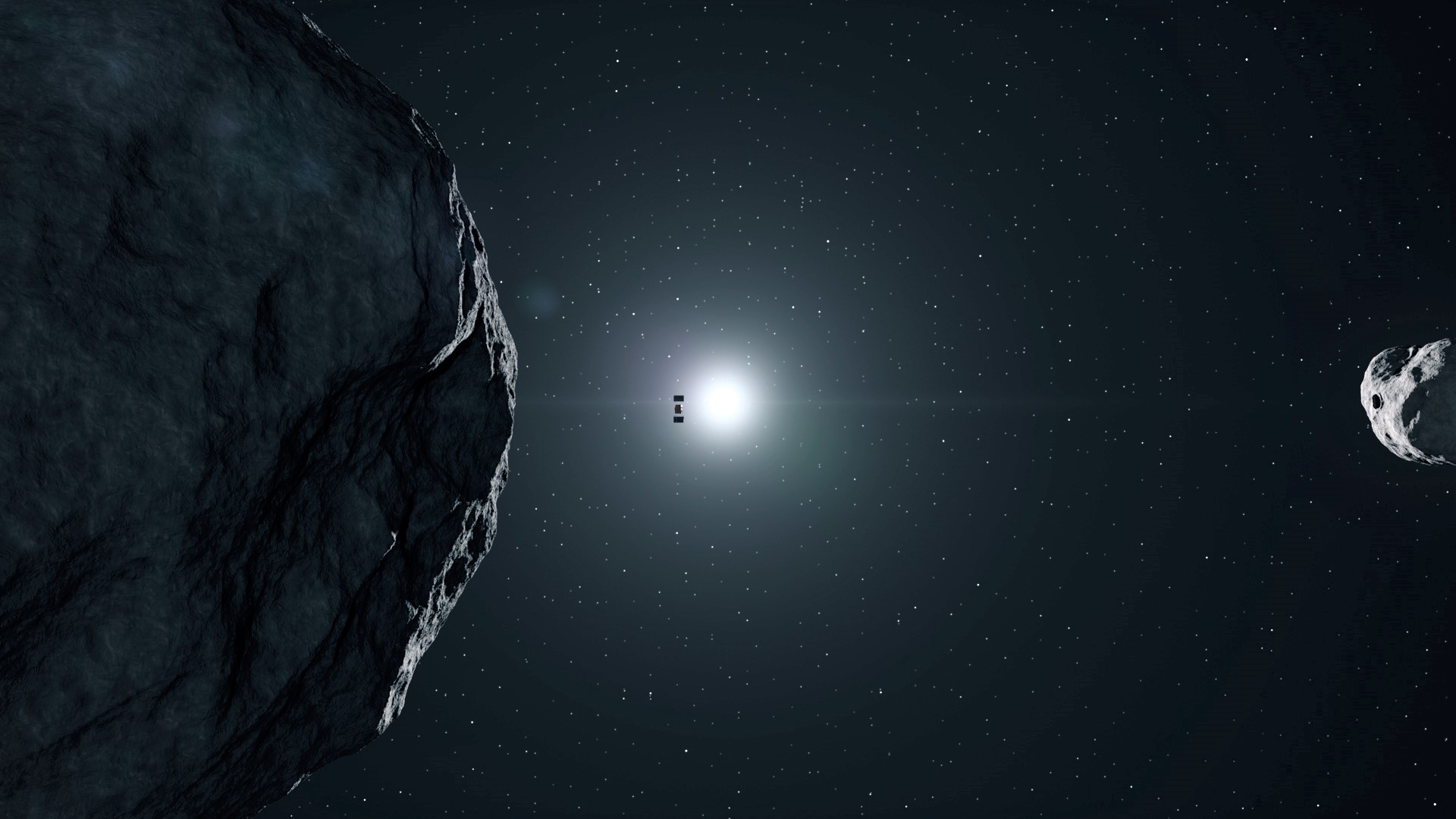At a Glance
- Researchers have studied the Nadir Crater, an asteroid impact site beneath the Atlantic Ocean, formed around 66 million years ago, coinciding with the Chicxulub impact.
- Advanced imaging techniques revealed the crater’s structure and the chaotic aftermath, including a bowl-shaped crater, liquefied rocks, and an 800-meter-high tsunami.
- Dr. Uisdean Nicholson initially made the discovery in 2022, and new 3D seismic data confirmed that an asteroid impact formed the crater.
- The study provides insights into the destructive power of asteroid impacts and their influence on Earth’s geology and climate.
- Plans include drilling into the seabed to collect samples, which could shed light on the conditions during the impact and inform understanding of Earth’s history and future asteroid risks.
Researchers from Heriot-Watt University have made significant strides in understanding a hidden asteroid impact crater deep beneath the Atlantic Ocean. The Nadir Crater, about 300 meters below the ocean floor, was formed approximately 66 million years ago by an asteroid collision. This timing coincides with the well-known Chicxulub impact crater in Mexico, widely recognized for its connection to the extinction of the dinosaurs.
Using advanced imaging techniques, the research team visualized the crater’s structure and the chaotic events that unfolded immediately after the impact. They detailed how the initial impact created a bowl-shaped crater, liquefied surrounding rocks, and produced an enormous tsunami over 800 meters high that traveled across the Atlantic. These findings, published in Communications Earth & Environment, provide new insights into the destructive power of asteroid impacts.
Dr. Uisdean Nicholson, who discovered the Nadir Crater in 2022, initially identified a depression that appeared to be an impact site. Collaborating with scientists in the U.K. and U.S., the team confirmed that the crater was indeed formed by an asteroid, with the new 3D seismic data providing clarity on its dimensions and impact dynamics. Dr. Nicholson likened their advancements in imaging technology to the evolution of medical ultrasounds, which have progressed from grainy images to detailed 3D views.
The implications of this research extend beyond understanding the crater itself. It offers a rare opportunity to explore how such ancient events may influence our planet’s geology and climate. The researchers also plan to drill into the seabed to collect samples from the crater to learn more about the conditions present during the impact. Their work highlights the importance of studying these geological features, as they can provide valuable information about Earth’s history and the potential risks posed by future asteroid impacts.
References
- Heriot-Watt University. (2024, October 3). Five-mile asteroid impact crater below Atlantic captured in ‘exquisite’ detail by seismic data. Phys.Org; Heriot-Watt University. https://phys.org/news/2024-10-mile-asteroid-impact-crater-atlantic.html
- Nicholson, U., Powell, W., Gulick, S., Kenkmann, T., Bray, V. J., Duarte, D., & Collins, G. S. (2024). 3d anatomy of the cretaceous–paleogene age nadir crater. Communications Earth & Environment, 5(1), 1–12. https://doi.org/10.1038/s43247-024-01700-4










